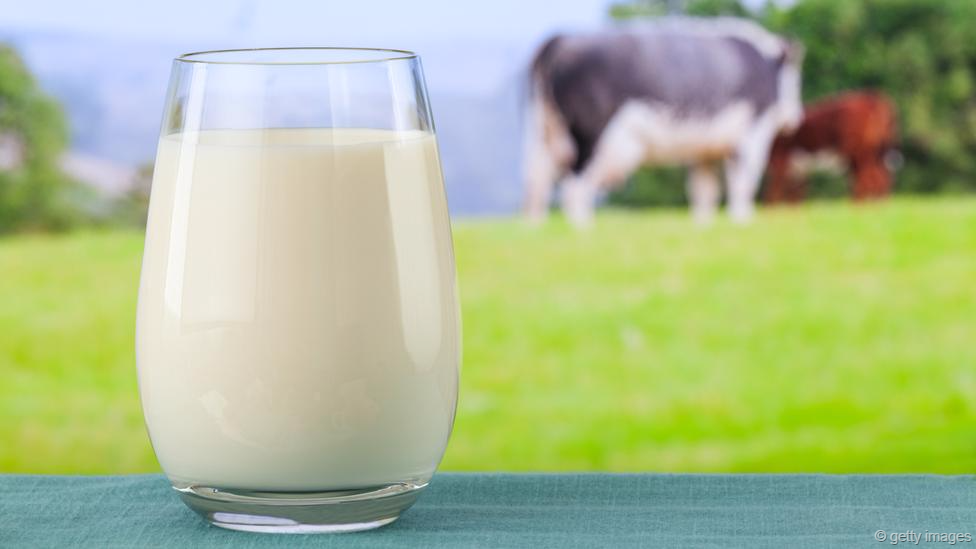How Did Milk Become A Staple Food?
Milk is regarded, along with bread, as one of the staples of the Western diet. But, Veronique Greenwood discovers, that’s only a very recent phenomenon.
In the modern pantry pantheon, milk occupies a curious place. It’s right up there with bread as one of the most basic and important foodstuffs in the West. In the US, when storms and hurricanes threaten, stores run out of bread, toilet paper – and milk. But widespread milk drinking is actually a rather recent development. In Europe and the United States in the 19th Century, the people who were supposed to consume cows’ milk regularly were primarily children. A tall, frosty glass of the stuff alongside every person’s breakfast plate would have been decidedly strange.

But fresh milk on its own was a baby food, one that grew more and more dangerous to consume as it moved farther from the farm where it was produced, a breeding ground for bacteria and sometimes adulterated with chalk and water by unscrupulous re-sellers. Its unlikely rise as a perfect food – something to sit alongside bread – is something that historian Deborah Valenze traces to several seemingly disparate factors that happened to coincide near the end of the 19th Century and into the 20th.
As infant mortality rose in cities, standards and practices for making milk safer, like pasteurisation, began more important. Around the same time, there was a growing interest in treating people through food, giving the sick only the purest, simplest things to eat. It was an idea espoused by John Harvey Kellogg, the inventor of the corn flake and head doctor of a famed sanitarium in Michigan, and many others like him.
Modern life and food were complicated and corrupt, but milk, consumed by everyone early in life, was simple, earthy, and natural, in the logic of the time. (The fact that it was white – the colour of purity – didn’t hurt either.) To boot, milk had fat, carbohydrates, and protein, all three of the components needed by the human body.
Temperance effect
Different countries have their own interesting variations on this tale: around the turn of the 20th Century in Germany, writes University of Basel historian Barbara Orland, the advent of grown men drinking milk was closely intertwined with temperance movements, as well as with the search for simple, healthy foods. In an attempt to shift the culture of drinking beer and spirits, especially in factory workers, temperance groups opposed to drinking alcohol pressed for the serving of milk in factories and even set up milk booths in towns, with some success.
As researchers deepened their knowledge of nutrition in the early decades of the 20th Century, the idea that milk had fat, carbohydrates, and protein waned as a justification for milk’s perfection. But its role as a source of newly discovered vitamins and the idea that it was somehow able to correct the deficiencies in any diet more than took up the slack.

That pleased the dairy industry, because farmers were producing far more than they could sell. A lot went to make sweets, formula milk, and even plastic. A perfect storm hit around 1920, when the agriculture community, the scientific community, and governments all came together on the message of the nutritional perfection of milk. Today the consensus is less sure. The abundance of fat in whole milk, especially, has raised eyebrows. Large studies have failed to find associations between milk consumption and fewer bone fractures, one of the supposed benefits. It’s possible to have a healthy diet without milk at all. But we still think of it as a fundamental food.
Understanding how milk came to be the darling it is today raises some interesting questions. Could we have wound up drinking something else every morning? A shake of pureed wheat, perhaps? Or a palate-pleasing shot of tomato juice?
And milk benefited from a specific cultural treatment, a story spun around its chemical and social qualities that vaulted it to levels of adoration that it perhaps didn’t entirely deserve. Are there any foods today that are getting the milk treatment? Today fad foods, scientific justifications, and moral judgments are on every corner. It will be interesting to see whether any of them last.

